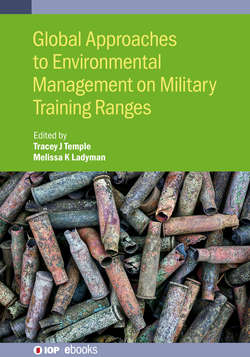Читать книгу Global Approaches to Environmental Management on Military Training Ranges - Tracey Temple - Страница 24
На сайте Литреса книга снята с продажи.
Degradation
ОглавлениеAs seen in section 1.3, explosives are likely to degrade in the environment, particularly when exposed to sunlight or soil that is rich in minerals, organic compounds and microbes [103]. Degradation in soil may occur via physical mechanisms (e.g. metal ions as catalysts) or due to biodegradation. The latter can be investigated by exposing specific strains of bacteria to explosive materials at low concentrations for hours or days [104]. This is not representative of a real soil environment, therefore soil microcosms have been used where spiked soils are suspended in a basal medium to encourage bacterial growth [55, 105]. This highlights the effect of different soil types on degradation, specifically looking at characteristics such as organic carbon content, iron availability and soil texture. However, under these conditions it is difficult to separate the effect of biodegradation from physical degradation and adsorption. One way to eliminate the effect of biodegradation is to sterilise the soils. Autoclaving at 120 °C or irradiating with gamma rays destroys bacteria, but keeps the organic carbon content the same, isolating its effect [81, 104]. More destructive methods (such as incineration at 400 °C) remove both microbes and organic carbon, so generic degradation pathways in different soil types can be determined. A more representative method is to monitor the effluent from soil columns for spiked explosives and their degradation products, but such methods need to be supported by additional degradation studies if the mechanism of degradation is not understood [56, 81].
